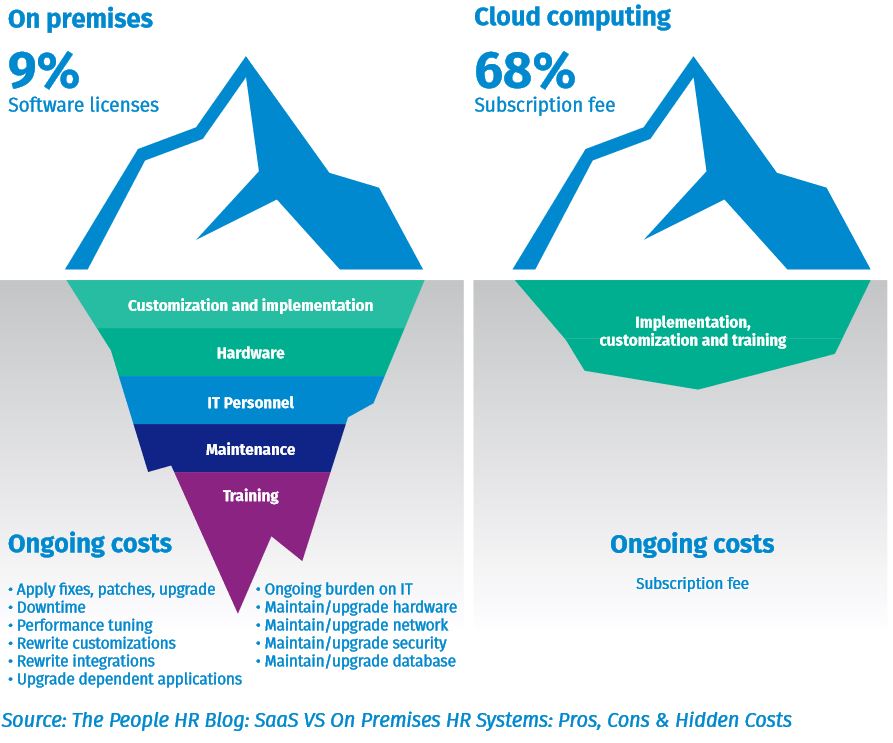One innovation driving many
A SaaS model, by contrast, allows firms to treat systems as a quantifiable, all-in-one operating expense, covering licenses, maintenance fees and so forth, that could be lower in the long run than the capital outlay to buy and maintain systems on premises. And they get a lot for their money: Cloud computing, the technology underpinning SaaS, is one of several innovations in recent years that enable financial institutions to boost performance beyond compliance and reporting, enhancing efficiency across the business, and therefore profitability.
Indeed, SaaS optimizes the utility of many of the other innovations. It allows firms to make the most of the latest advances in hardware, such as in-memory computing, that may be difficult to house on premises, especially for smaller firms, such as challenger banks, because of the expense involved and/or a shortage of skilled personnel.
SaaS solutions also facilitate flexibility by allowing institutions to scale up or down through the use of modular hardware configurations, and by adding, updating and subtracting software to meet commercial demands – new business lines, new markets – and demands from regulators, too. When institutions outsource key tasks to a service provider, part of whose job is to ensure that its systems are equipped with software compatible with the latest regulatory updates, information that in-house staff may not always be aware of, they can be more confident in the results they submit.
That last part surely has crossed regulators’ minds. It is
one reason that they are encouraging banks to embrace
software as a service. SaaS solutions permit another
circle to be drawn that supervisory bodies no doubt find
virtuous. The greater adaptability of the hardware and
software, enhanced by the expertise of the specialists who
configure and run it, allows technological advances and
the demands imposed on banks to shape and refine each
other. Regulators know that updates can be incorporated
more readily into systems, and so they make more, and
more complicated, demands.
Supervisory authorities have moved certain items higher
up on their agendas – requests for more granular data; an
ability to grab information rather than ask banks to submit
it; longer, clearer audit trails; more closely integrated
systems that facilitate cooperation among key functions
– in part because they know they are within easier reach
under a SaaS model. The understanding of what regulators
are looking for then drives the development of it.
An understandable but misplaced reticence
Some organizations may be reluctant to try a SaaS
solution. Perhaps, like parents sending their child off
to school for the first time, they are wary of letting their
data out of their immediate control. Security concerns
are understandable, but there is less cause for them
than in the past. Chances are, in fact, that remote servers
and connections are more secure at Microsoft Azure or
Amazon Web Services facilities than at almost any financial
institution. The service providers spend billions of dollars
to make sure that is the case.
There may be no safety misgivings at all behind a
reluctance to migrate to the cloud. Firms could just be
satisfied with their legacy systems. They may have been
designed and installed just for them, and they may serve
their purpose well enough. It could be that some IT
departments fear the impact a SaaS solution will have on
their operations – or on their jobs.
But anyone who works in tech knows that change is
inevitable; it is a hallmark of the trade. SaaS is simply
better at handling change than in-house architecture.
One of the most important aspects of a SaaS solution is
the service contract, with performance guarantees, that
comes with it. No vendor that installs a system on a firm’s
premises and then walks out the door can provide the
same level of commitment, and in-house staff, even in a
large organization, may not be able to fill the gap. They will
continue to play a vital role in the SaaS era, however. The
understanding of their company’s needs will shape the
solution employed and the ongoing relationship with the
service provider, and they will remain involved in matters
such as network security.
No letup by regulators or innovators
Financial institutions face pressure from many directions:
the accelerating pace of innovation, the desire of
regulators to ride that wave and push firms to move to the
cloud, and the need to look for any edge in an increasingly
competitive industry – especially as challenger banks with
a lot of ambition and not much capital proliferate, and
more established firms work to fend off the encroachment.
With the SaaS model coming to be recognized as a useful
way to relieve the pressure, it is virtually certain that take-
up will reach 100 percent.
That may seem hard to believe, especially if you work
in an organization that has come to rely on in-house
technology and in-house operators keeping it running.
But one constant of history is the tendency for a dominant
technology to be replaced swiftly and utterly by a more
efficient and simpler alternative. It is a story you have
seen play out many times. And if you have watched it play
out lately, it was probably not on a DVD.






